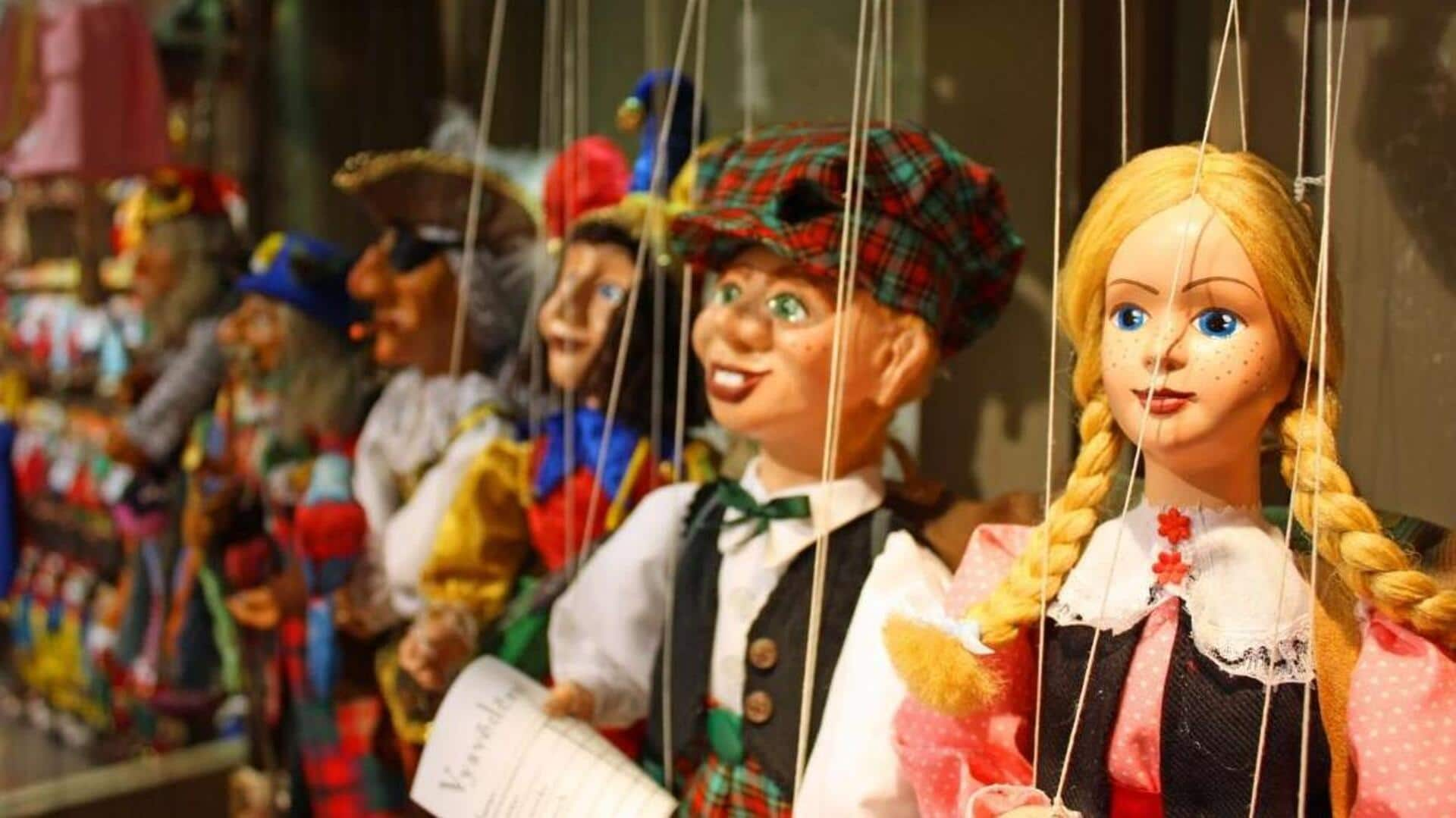
Marionette puppetry: History, significance, and everything in between
What's the story
The art of handmade marionette puppetry brings craftsmanship and performance together, breathing life into inanimate objects.
This traditional craft revolves around creating string-attached puppets, allowing puppeteers to manipulate them into actions and stories.
Rooted in history and spanning cultures, marionette puppetry combines entertainment and artistic expression, making it a truly special art form.
Crafting
The art of crafting marionettes
Making a marionette entails choosing materials like wood, cloth, and wire for the body parts and costumes.
Craftsmen carve, sew, and put together each piece by hand with meticulous attention to detail.
This process can range from hours to several days, depending on the complexity of the design.
The goal is to create a puppet that is not only beautiful to look at but also functional, allowing for smooth motion.
Performance
The role of puppeteers
Puppeteers are the unsung heroes behind the magic of marionettes. They breathe life into the puppets through the delicate dance of string manipulation.
This artistry demands countless hours of practice to perfect the synchronization of movements - be it walking, dancing, or even gesturing.
Through their skillful control, puppeteers express emotions and distinct personalities, ensuring each marionette performance leaves a lasting imprint on the audience's heart.
History
Historical significance
Marionette puppetry has been a vibrant part of human culture for centuries, if not thousands of years, with roots in ancient civilizations.
It served various purposes, including storytelling, religious ceremonies, social commentary, and simple entertainment.
Each region/culture evolved its unique style and techniques, mirroring their local traditions, folklore, and historical narratives.
A bit of knowledge about its historical context would make us appreciate this art form more.
Learning
Educational opportunities
Marionette making and puppeteering workshops and courses provide a practical learning experience for enthusiasts of this art form.
Suitable for beginners and advanced students, these courses teach design concepts, construction techniques, and performance skills.
Learners acquire a complete knowledge of building and operating marionettes, from fundamental string control to conveying emotions through motion.
Getting started
Tips for aspiring puppeteers
If you are a beginner at marionette puppetry, start small.
Master the basics of manipulation with simple puppets before tackling more intricate designs.
Study the art of puppetry by watching performances of skilled puppeteers to learn about timing, expression, and storytelling.
Join community groups or forums for puppet enthusiasts to connect with others who can share advice, resources, and encouragement.